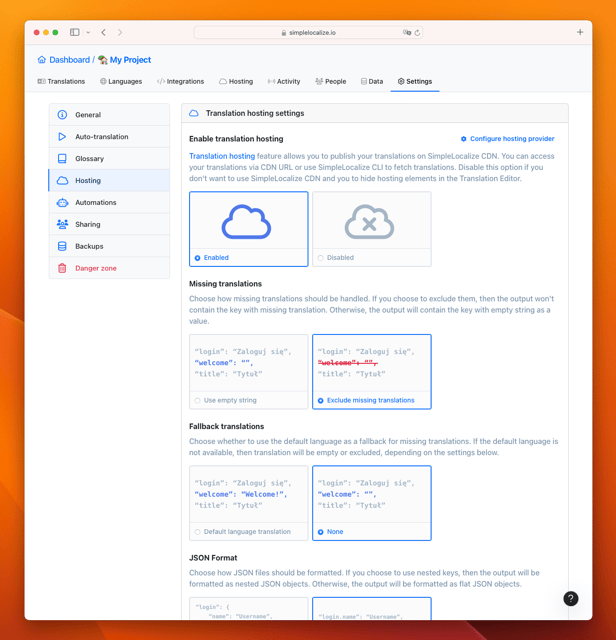In your project settings, you can find extra options and settings for Translation Hosting. Go to 'Settings' > 'Hosting' to access them.

After changing translation hosting settings, you need to publish translations from the 'Hosting' tab in your project to apply changes.
Fallback translations
Choose the default language for missing translations. When a translation is missing in a specific language, the default language translation will be used. The default translations are taken from the default language set in the 'Languages' tab.
If you select 'None', missing translations will be returned as empty strings or not included in the JSON file at all. The behavior depends on the 'Missing translations' setting.
Missing translations
Determine how missing translations should be handled. Here are two options you can customize:
- Missing translations - choose if missing translations should be included or excluded in the hosted files
- Fallback translations - choose if missing translations should be replaced by default language translations
JSON Format
Choose formatting for JSON files, as nested JSON objects or flat JSON objects.
Nested JSON
{
"en": {
"key": "value"
}
}
Flat JSON
{
"en.key": "value"
}
In some cases nested JSON may cause issues due to conflicting keys. In such cases, you can use flat JSON format or adjust key namings in the editor.
Custom environments
In custom environment section you can create additional environments for your project. For more information, see the custom hosting environments section.